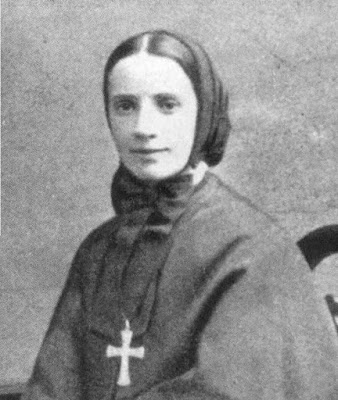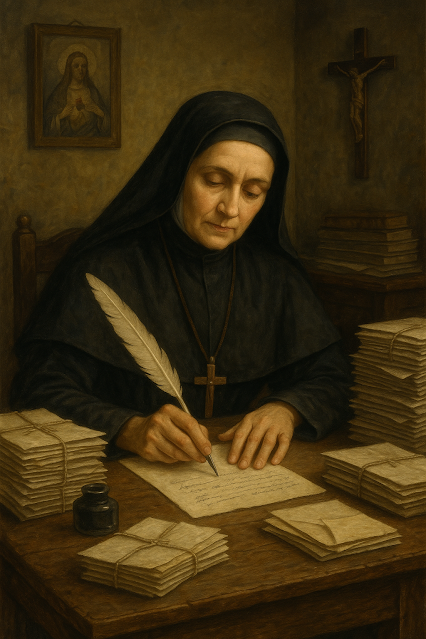NAME Gaius Julius Caesar Augustus Germanicus, commonly known as Caligula.
WHAT FAMOUS FOR Caligula is infamous for his tyrannical and extravagant reign as the Roman Emperor from AD 37 to 41. His rule is often highlighted by accounts of extreme cruelty, eccentricity, and erratic behavior.
BIRTH Caligula was born on August 31, AD 12, in Antium, Italy (modern-day Anzio).
FAMILY BACKGROUND Father: Germanicus Caesar (15 BC-19 AD), a prominent Roman general and the stepson and great-nephew of Tiberius.
Mother: Agrippina the Elder, granddaughter of Augustus and Scribonia.
Siblings: Four other sons (Tiberius and Gaius Julius, who died young; Nero, Drusus), and three daughters (Julia Livilla, Drusilla, and Agrippina the Younger).
Significant family events:
In 33 AD, Agrippina committed suicide after being banished by Tiberius.
When his favorite sister Julia Drusilla died on June 10, 38, Caligula was badly affected by the loss. He had the Roman Senate declare her a Goddess, as Diva Drusill and declared a year of national mourning, imposing a chilling silence across the empire. Laughter, celebratory feasts, and even the simple act of bathing were banned for all citizens. The penalty for violating this edict? Death.
Insanity was prevalent in his family.
CHILDHOOD Young Caligula, accompanying his father on military campaigns, became a familiar sight to the Roman legions. The soldiers, charmed by the young boy, affectionately nicknamed him "Caligula," which translates to "little boots" – a reference to the miniature military uniform his parents dressed him in.
In 14 AD, during a tense situation within Germanicus's camp, bordering on mutiny, Caligula was briefly sent away for his safety. However, fearing the consequences of upsetting the superstitious soldiers, he was soon brought back to appease them.
EDUCATION He received a typical Roman education for a noble, including training in rhetoric, literature, and the arts. He was also exposed to the military discipline of his father's legions.
CAREER RECORD Caligula's early career was relatively uneventful until he was adopted by Tiberius and became his heir.
37 AD: Became emperor at the age of 24 after the death of Tiberius.
37-41 AD: Reign marked by brutality, extravagance, and political instability.
APPEARANCE Contemporary accounts describe Caligula as tall and pale, with a thin face and piercing eyes. He had a massive, hairy body, bald head, and thin legs and neck. Caligula was prematurely bald and sensitive about it, making it a capital crime to look down on him from above.
Believing himself to be the reincarnation of Jupiter he grew a long, tangled beard.
.jpg) |
| Marble bust, 37–41 AD by Sergey Sosnovskiy from Saint-Petersburg, Russia |
FASHION He dressed extravagantly, often in ornate and luxurious clothing, and sometimes donned costumes of various gods and demigods.
CHARACTER Caligula's character is described as complex, with initial promise giving way to cruelty, paranoia, and madness. He was known for his erratic and ruthless decisions.
SENSE OF HUMOUR His sense of humor was often cruel and macabre, including making jokes about executions and tortures.
When incensed by the Roman citizens cheering for a gladiatorial team he did not support, Caligula wished aloud that the Roman people had one neck so he could slay them all with one stroke.
RELATIONSHIPS Caligula had numerous relationships, both heterosexual and homosexual. He was married four times, with his most notable wife being Caesonia.
On his appointment as emperor, Caligula adopted his cousin Gernellus and six months later had the poor chap executed.
MONEY AND FAME His reign was marked by extravagant spending, leading to financial troubles for the empire. His fame, largely negative, endures through history.
FOOD AND DRINK Caligula indulged in lavish banquets and was known for his gluttony. He enjoyed exotic and expensive foods.
His horse Incitatus was treated to luxurious foods.
MUSIC AND ARTS He was a patron of the arts and enjoyed theatrical performances, sometimes participating himself.
LITERATURE Caligula was literate and appreciated literature, although there are no significant literary works attributed to him.
NATURE He had a fondness for gardens and often enjoyed their beauty, incorporating them into his palatial estates.
PETS Caligula had a notable affection for horses, with his favorite being Incitatus.(meaning "spurred on"). Incitatus lived a life of unimaginable luxury, residing in a stable of polished marble and enjoying meals served from an ivory manger. A golden goblet quenched his thirst, and a team of dedicated slaves catered to his every whim. Caligula even hosted lavish parties where Incitatus himself was the guest of honor! The rumor that Caligula intended to make Incitatus a consul, a position equivalent to a high-ranking senator, further cemented his reputation for eccentricity.
 |
| Caligula and Incitatus, drawing by Jean Victor Adam |
HOBBIES AND SPORTS He enjoyed watching gladiatorial games and chariot races.
Caligula enjoyed organizing large-scale fights. He once entered the arena himself, ensuring his victory by having wooden swords for his opponents while he used a real one.
Caligula never learnt to swim.
SCIENCE AND MATHS Caligula conducted experiments to produce gold from orpiment, an early form of alchemy.
REIGN Ah, Caligula—Rome’s favorite cautionary tale about what happens when you give a man too much power and too few boundaries. Born Gaius Julius Caesar Augustus Germanicus (because Roman names apparently had to be a paragraph long), he ascended the imperial throne on March 18 AD 37, dazzling the empire with early signs of promise before descending into a tyrannical freefall that made later despots look like model citizens. His reign was a whirlwind of extravagance, paranoia, and general unhinged behavior that, somehow, still included some well-intentioned infrastructure projects.
In the beginning, Caligula was a crowd-pleaser. He ended Tiberius’ nasty habit of treason trials, welcomed back exiles, and made sure the Praetorian Guard got paid, which was always a wise move when you’re relying on them for job security. He also dabbled in public works, restoring temples, expanding aqueducts, and even gifting Pompeii a shiny new amphitheater—because nothing says “benevolent ruler” like better stadium seating.
Then, about seven months in, something snapped. He fell seriously ill—possibly epilepsy, possibly a nervous breakdown, possibly just Rome catching up to the fact that absolute power and sanity rarely go hand in hand. When he recovered, he was a changed man. And not in a “let’s adopt a healthier lifestyle” way, but in a “let’s execute my closest allies and accuse everyone of treason” way. One of his first moves was eliminating Macro, his former supporter, proving that in ancient Rome, gratitude had a very short shelf life.
As time went on, Caligula’s grip on reality became increasingly questionable. He declared himself a god (which was bold, even by emperor standards), emptied the treasury on absurd luxuries, and had a habit of executing senators who looked at him funny. At one point, he allegedly planned to make his horse, Incitatus, a consul, which either reflected a deep appreciation for equine intelligence or was just his way of messing with the Senate. Either way, it did little to improve his approval ratings.
By AD 41, Rome had had enough. A group of senators and members of the Praetorian Guard orchestrated his assassination.
PHILOSOPHY & THEOLOGY Caligula considered himself a living god and demanded to be worshiped as such, reflecting his megalomania rather than any coherent philosophical stance.
One of the most controversial of Caligula's acts was his plan for Jerusalem. Upon learning about the city's imageless temple, a holy site for Jews, Caligula decreed the placement of a life-sized statue of himself within the holiest chamber. This act of desecration would have been a direct affront to Jewish beliefs. Although his advisors desperately pleaded with him, fearing a violent uprising, Caligula remained stubbornly determined. Thankfully, his death in 41 AD came before this plan could be implemented, sparing the temple and potentially averting a major religious conflict.
POLITICS His political actions were often arbitrary and brutal. He conducted purges of perceived enemies and demanded absolute loyalty.
SCANDAL Caligula's reign was filled with scandalous behavior, including alleged incest with his sisters, and bizarre public spectacles. He executed many of his relatives and engaged in numerous acts of cruelty, including sawing rivals in half and feeding criminals to animals.
Caligula tormented his senators by making them run in front of his chariot for miles.
MILITARY RECORD Though initially popular with the military, his later campaigns were erratic and sometimes bizarre, such as the ill-fated campaign in Britain which ended with his soldiers collecting seashells.
HEALTH AND PHYSICAL FITNESS Caligula suffered from a serious illness in 37 AD, likely exacerbated by a depraved lifestyle. He was possibly afflicted by encephalitis or lead poisoning.
His health declined during his reign, and he may have suffered from epilepsy or other mental disorders.
HOMES In 31 AD, at the young age of nineteen, Caligula was sent to live with Tiberius at the secluded Villa Jovis on Capri. This marked the beginning of a six-year period under the watchful eye of the emperor.
After becoming emperor, his principal residence was the imperial palace on Palatine Hill, but he also had numerous other estates.
TRAVEL Caligula traveled throughout the Roman Empire, including to the provinces, often with grandiose displays.
Upon becoming Emperor, Caligula craved a dramatic display of defiance. An astrologer had dared to suggest he'd never be emperor, with odds as unlikely as "riding a horse across the Gulf of Baiae." In response, Caligula embarked on a seemingly impossible feat. He ordered the construction of a temporary bridge, a colossal structure stretching over two miles across the bay, using ships as pontoons. Dressed in the legendary breastplate of Alexander the Great, Caligula then triumphantly rode his horse across the bridge, proving the astrologer wrong in a spectacle that defied both logic and expectation.
Caligula's extravagance extended to Lake Nemi, where he harbored a pleasure barge unlike any other. This floating palace boasted opulent features like private baths, lavish dining rooms, and even gardens overflowing with vines and fruit trees.
DEATH Caligula's reign of terror came to a bloody end on January 24, 41 AD. Just a day before his planned departure for Alexandria, he was brutally murdered by Praetorian tribunes Cassius Chaerea and Cornelius Sabinus, along with several other centurions.
The assassination unfolded during a performance by a troupe of young actors at a palace games festival honoring the divine Augustus. In the midst of the festivities, Chaerea lunged at Caligula, striking the first blow. Confined within a narrow space, escape or rescue proved impossible. By the time Caligula's loyal Germanic guards arrived, their emperor lay dead. The chaos escalated as the Praetorians, fueled by fear and ambition, cut down many others, including innocent senators and bystanders. The carnage only ceased when the Praetorians asserted control.
Fearing retribution from Caligula's remaining allies, the assassins then hunted down and murdered his wife, Caesonia, and their young daughter, Julia Drusilla.
 |
| The Assassination of the Emperor Caligula, by Lazzaro Baldi, between 1624 and 1703 |
APPEARANCES IN MEDIA Caligula has been depicted in numerous films, television series, and books, often highlighting his excesses and cruelty. Notable portrayals include by Malcolm McDowell in the 1979 film Caligula, known for its graphic content and produced by Bob Guccione of Penthouse fame.
ACHIEVEMENTS Caligula’s reign is not noted for significant positive achievements. However, his actions and the subsequent reaction to his rule significantly impacted the Roman Empire's administrative structure and imperial succession.
Sources Book of Lists, Cassells Book of Humorous Quotations




.jpg)

_(cropped).jpg)




Jul2006.jpg)




